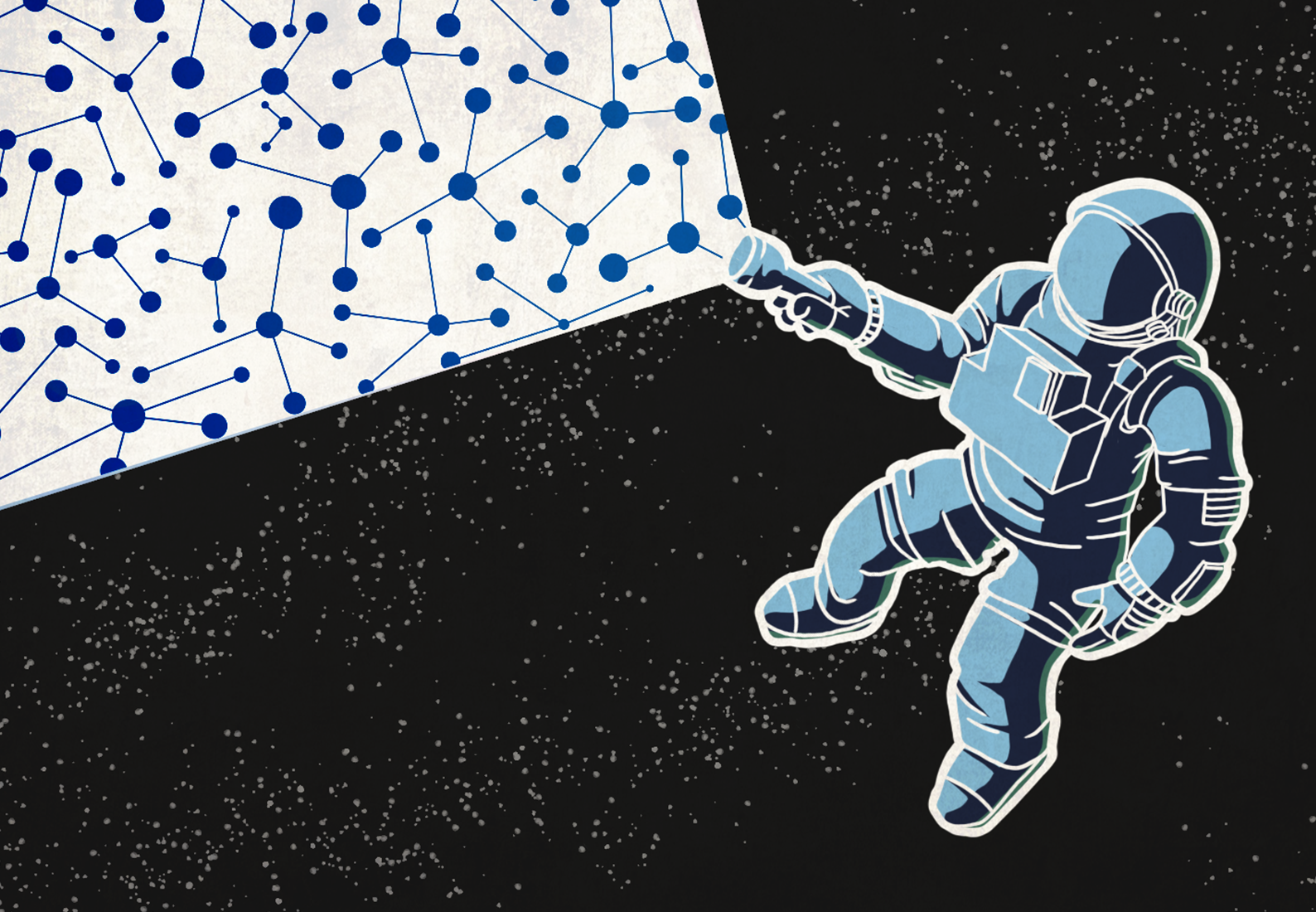Chemical space is the set of every possible chemical compound, including every known drug molecule, and those that have yet to be discovered. The total number of compounds that make up chemical space is estimated to be 1060 — that’s a one followed by SIXTY zeros. A number so large that it is double the number of stars estimated in the universe, so large that it might as well be infinite.
The more chemical space that can be meaningfully explored at the earliest stages of drug discovery, the greater the likelihood of finding novel, biologically active molecules that meet key parameters for clinical advancement. To date, only a tiny fraction of this space has been explored due to the very high dollar costs and technical challenges associated with experimental investigation. In fact, fewer than one trillion compounds have ever been synthesized and meaningfully experimentally characterized. This is quite literally less than a drop of water in the vast ocean of chemical space.
Schrödinger overcomes this challenge by using physics-based predictions tightly coupled to highly scalable machine learning methods to accelerate the exploration of chemical space and facilitate the discovery of new medicines to treat disease. Running these “computational assays” facilitates much wider and faster exploration of chemical space than is possible using traditional lab-based methods.
To put this into perspective, traditional approaches to drug discovery result in the synthesis of 1,000 compounds per year for analysis. Schrödinger’s physics-based platform for drug discovery can evaluate many billions of molecules per week — virtually — with a high degree of accuracy in order to triage down only the most promising candidates to move forward in the lab.








